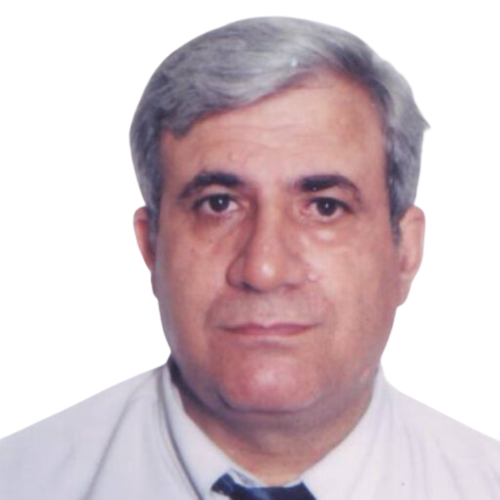
A Cihan University-Erbil Professor Published a Research Article with Frontiers
Professor Mahmood Ameen Abdula from the Department of Medical Microbiology at Cihan University-Erbil published a research article entitled “Hepatoprotective potential of a novel quinazoline derivative in thioacetamide-induced liver toxicity” in the Frontiers in Pharmacology .
About the author:
Name: Mahmood Ameen Abdula
Qualification: Ph.D.
Academic rank: Professor
Affiliation: Department of Medical Microbiology, Cihan University-Erbil
TAP: https://sites.google.com/cihanuniversity.edu.iq/mahmood-ameen/home
Google Scholar Account: https://scholar.google.com/citations?hl=en&user=5PjPuZsAAAAJ
ORCID account: https://orcid.org/0000-0003-4784-6313
Journal Coverage:
https://www.frontiersin.org/articles/10.3389/fphar.2022.943340/full
Title: Frontiers in Pharmacology
Science Citation Index: https://mjl.clarivate.com:/search-results?issn=1663-9812&hide_exact_match_fl=true&utm_source=mjl&utm_medium=share-by-link&utm_campaign=search-results-share-this-journal
Science Citation Index Expanded
Clarivate Analytics (Wos: IF = 5.988)
SCOPUS: Q1
Publisher: Frontiers
Country: United Kingdom
About the Paper:
Title: Hepatoprotective potential of a novel quinazoline derivative in thioacetamide-induced liver toxicity
DOI: https://doi.org/10.3389/fphar.2022.943340
Abstract:
Liver fibrosis denotes a pathologically abnormal state of hepatocytes, which may originate from genetic, chemical, or environmental factors (Delire et al., 2015). Regardless of its origin, the condition is accompanied by an inflammatory response with abundant deposition of the extracellular matrix (ECM) including fibrillar collagen (O’Connell and Rushworth, 2008; Salama et al., 2013). During fibrosis, the balance between degradation and regeneration of the connective tissue components is disturbed (Czechowska et al., 2015). Liver injury starts as
inflammation and develops as an abnormal wound healing process leading to cirrhosis and ends with hepatocellular carcinoma in the majority of liver diseases (Van der Meer et al., 2015). As estimated by some studies, the cases of cirrhosis-mediated hepatocellular carcinoma are 80% (Llovet and Bruix, 2003). Additionally, compensated cirrhotic livers recorded high mortality
in patients with hepatocellular carcinoma (Fattovich et al., 2004). With the hope of anti-fibrotic therapy to revive the normal liver architecture and function, liver fibrosis can be considered a bidirectional process (Friedman, 2010). Thioacetamide (TAA) is a carcinogenic chemical that is used by researchers to induce liver damage in chronic and acute experiments. Its mechanism of damage depends mainly on oxidative stress (Staňková et al., 2010). Peroxidation of the hepatocellular lipid layer and disturbance in liver cell functions were considered the main features of oxidative stress in liver injury (Mostafa et al., 2021). The mechanism of deterioration in the biochemical reactions inside liver cells damaged by thioacetamide and its oxidative stress leads to massive inflammatory responses and necrosis of hepatocytes (Chang et al., 2021). Recently, many studies have been conducted on synthetic compounds in trying to find convenient therapies to stop or at least inhibit the progress of liver fibrosis such as barbituric acid derivatives (Wang et al., 2020) and glycerrhetinic acid derivatives (Zhang et al., 2020). To our knowledge, quinazoline and its derivatives exhibited pharmaceutical efficacies as a
chemotherapeutic agent in cancer (Bansal and Malhotra, 2020) and promising therapy against coronavirus (COVID- 19). Borik and Hussein (2022a) have recently published that quinazoline derivatives showed very good antioxidant and anti- inflammatory activities via their molecular docking study and their study of the relationship between structure and activity of quinazoline compound. Furthermore, Lv et al. (2020) reported that synthetic phenyl chloromethine-quniazoline derivative has proved induction of apoptosis in in vivo and in vitro hepatic cancer cells. In this context, this research was conducted to estimate the hepatoprotective activity of a quinazoline Schiff base compound (Q-Br) against sub-chronic thioacetamide toxicity in rats. To our knowledge, no experimental study was conducted on the novel quinazoline derivative Q-Br. Therefore, the present study was designed to evaluate the anti-oxidative and antifibrotic mechanism of Q-Br in the liver tissues of rats through the histological study of the animals’ liver tissues treated with low- and high-doses of Q-Br compound using Silymarin as a standard drug.



